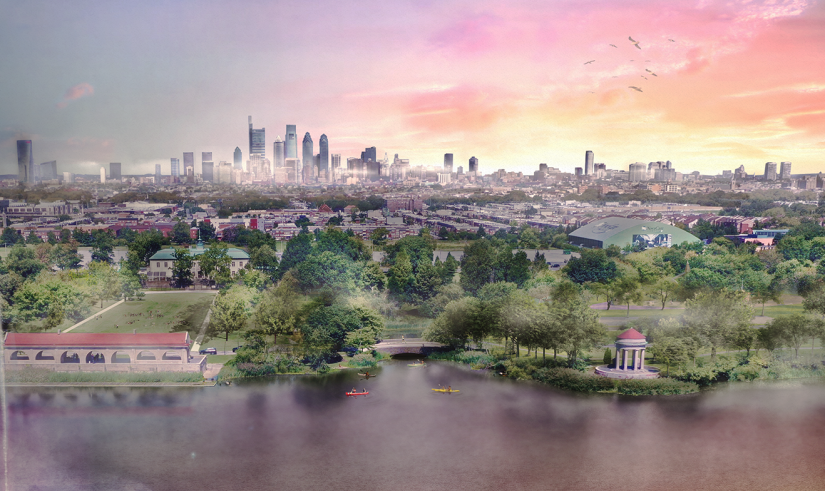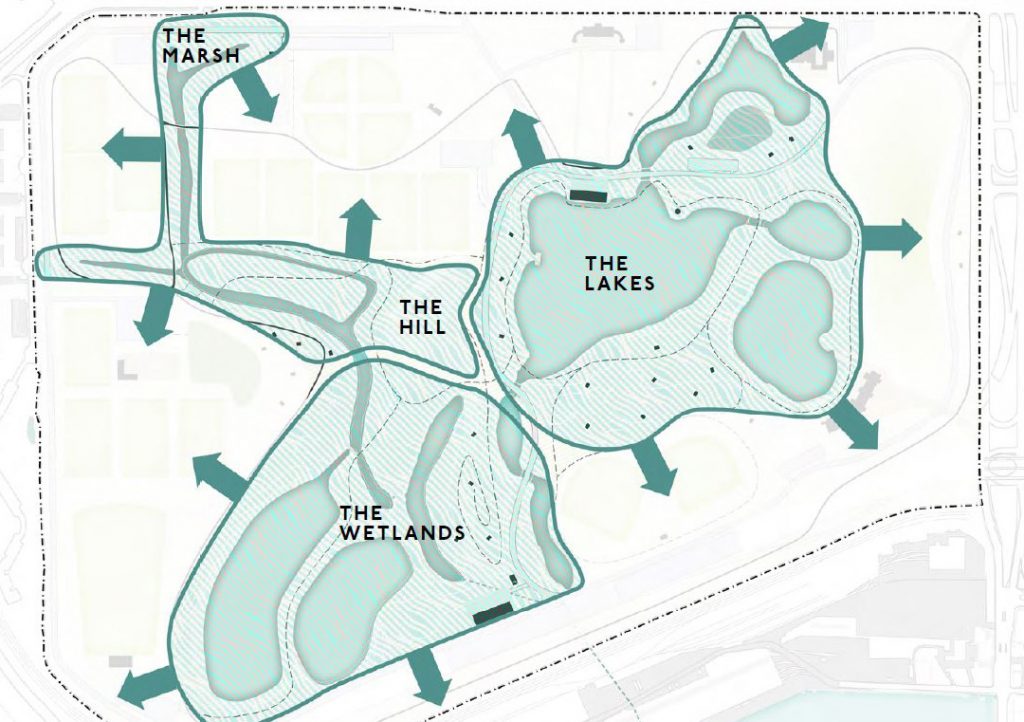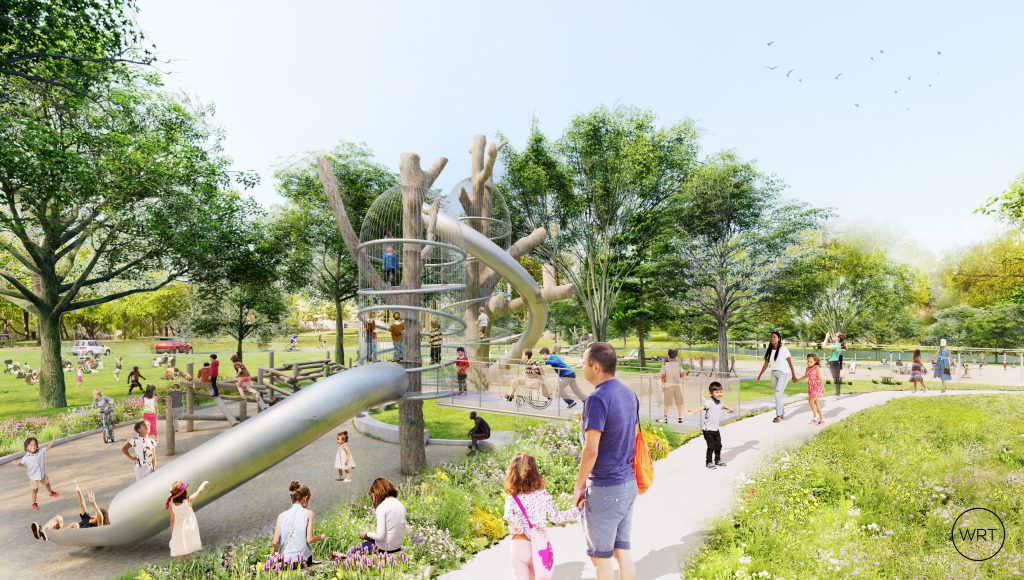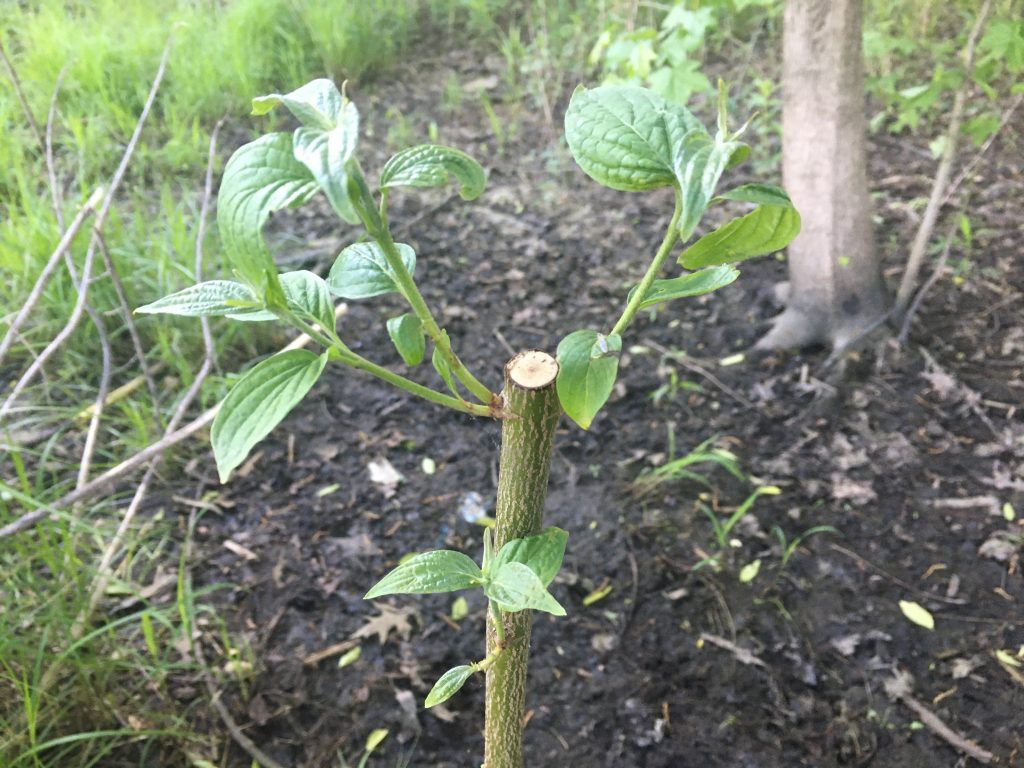On January 20th, more than 200 people joined us on Zoom for our Virtual Open House to find out what’s coming up in FDR Park in 2022.
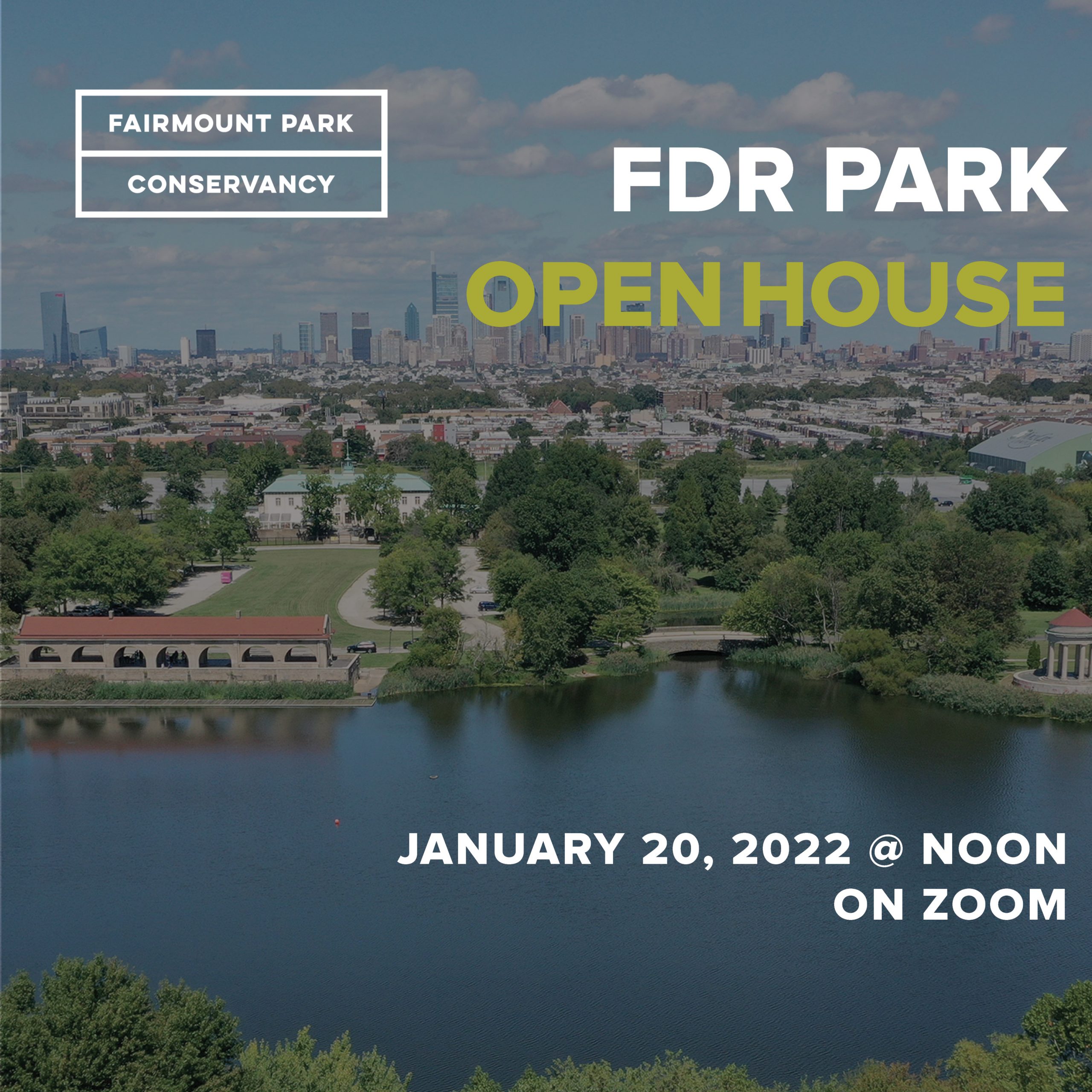
During the Open House, participants heard updates from:
- Maura McCarthy, Executive Director of Fairmount Park Conservancy
- Councilmember Kenyatta Johnson
- State Senator Nikil Saval, PA Senate, District 1
- State Representative Regina G. Young, PA House, District 185
- Patrick Morgan, First Deputy Commissioner of Philadelphia Parks & Recreation
- Justin DiBerardinis, FDR Park Manager
- Lindsey Scannapieco, Friends of FDR Park
If you missed the Open House, you can view the recording here:
FDR Park Virtual Open House 1.20.2022 from Fairmount Park Conservancy on Vimeo.
Below you’ll find answers to the questions that were asked in advance of and during the Open House about FDR Park, as well as links to resources that we shared during the open house.
Will more land care positions and internships be added to steward these new lands?
Yes! There are plans underway at FPC, PPR, and Friends of FDR to begin more robustly staffing the existing and future natural areas. That effort started back in 2021 as Justin started rounding out his team and it will continue throughout this FDR Park Plan process as more work is completed. We will be directing more and more resources towards the maintenance and establishment of recently completed work. PPR will also be introducing Seasonal Maintenance Opportunities as well and that information can be found on Philadelphia Parks & Recreation’s website.
FDR Park is currently hiring for a team member to lead their 2022 public boating program. Learn more about this opportunity here.
So many Philadelphians have fallen in love with the meadows at FDR. Given the new ecology thriving there and the growing community dedicated to its use and conservation, will the park plan be adapted to preserve it?
There is a lot of commonality between the park users and residents who we engaged during the initial planning process and the new users who discovered the park over the last two years around what folks want to see at FDR Park. Both of these groups agree that FDR Park is a unique and critical green space in South Philadelphia. Both groups value a connection to nature.
A key element of this plan is reacting to the realities of climate change. One of the things that’s important to understand about these meadows is that they are artificial. This is not a place a meadow would exist in nature if we hadn’t artificially created it. It’s actually below sea level. We have to work really hard to create the habitat that we see there today. In fact, you’re going to start seeing reversions to its natural state as things like the pump that empties the western half periodically breaks – you’ll see there is a lot of standing water days after a rainfall, for example.
Revitalizing the environmental integrity of FDR Park is core to the FDR Park Plan. The land that encompasses the “Meadows” is exposed to invasive species, prone to severe flooding, and isn’t a sustainable ecosystem. Our goal is to provide the community equitable and safe access to recreation, while strengthening the park’s ecological sustainability and resilience to flooding. It’s imperative all children have a safe place to play, and these recreation fields help make that vision a reality.
Will visitors be allowed to bring their own boats to the lake or only can rent them? Is snowmobiling allowed at the park (thinking about damage to plants and infrastructure)?
FDR Park does have a ramp for boats. Motorized boats are not allowed, but kayaks and rowboats are welcome. In terms of our boating program that was launched in 2021, a youth community boating program launched in 2021, and the Friends of FDR Park offered open boating nights for members and volunteers. The Conservancy also launched kayak tours at FDR Park, too. Boating is going to become a bigger part of the offerings of this park – so stay tuned about all of the opportunities coming up in 2022.
Snowmobiling is not allowed in Philadelphia’s parks.
As a working parent, I don’t need fields at the farthest southern point in Philly. There’s a soccer field that is currently permanently locked 2 blocks away from my house. Sports fields and playgrounds belong in neighborhoods, unlocked and maintained.
We need both neighborhood fields and also fields in our larger parks.
One of the best things about the FDR Park Plan is that the fields are intertwined with natural areas and open spaces here. That’s different from neighborhood facilities, which tend to be sterile from an environmental perspective. The FDR Park Plan addresses the city-wide necessity for more fields and provides an opportunity for kids who are there for active recreation to have an experience with passive recreation and nature.
We know that interactions with natural spaces are some of the most healing experiences we can provide our public. Most of our facilities are either/or – they’re either a natural area or they’re a recreational area. The thing that’s extraordinary about the FDR Park Plan is that it blends the two – it allows this park to act as a common space to bring folks to hang out together who might not normally hang out together in the same space.
(The name of the locked facility was noted and submitted to Philadelphia Parks & Recreation for follow up).
How will parking change?
The number of parking spaces will increase from 900 current spaces to 1,700 spaces. Most of these spaces will come from on street parking through the expansion of the park road to the western half of the site.
Currently, parking is concentrated in the heart of the park, including in front of the American Swedish Museum and adjacent to the Lakes. The Plan calls to remove the large lots from this area (which will become an important ecological core) into other pockets throughout the park, including the western portion, an underutilized area under I-95, and new lots at the perimeter of the park.This will provide users direct access to specific amenities throughout the park.
In addition to parking, the Plan proposes three new dedicated pedestrian and bicycle entrances and a new multi-use path to separate vehicles from cyclists. A key piece of the Plan is positioning a large park to better support transportation access. The Plan calls for a new Gateway to better connect the park to the Broad Street Line, regional trail and transportation networks, including I-95, and the Schuylkill River Trail.
How does astroturf make the space more resilient in the face of climate change?
Artificial turf can provide four important functions that unfortunately can not be achieved with even the best natural grass fields:
- Synthetic turf fields reduce the need for mowing, which lowers carbon dioxide emissions, reduces the needs for fertilizers that are the current cause of much of the algal blooms in the park and reduces need for pesticides and herbicides.
- Converting the golf course concession into a restored ecological core, playground, and athletic fields diversifies the Philadelphians being served by this acreage.
- Artificial turf fields can be used for more hours of play without needing “rest” like natural fields, allowing the same investment to serve many more kids.
- The artificial turf fields can be constructed to allow more effective storage and management of stormwater. They will become part of the stormwater management infrastructure.
Why are there so many ballfields in the plan and why is this number the choice instead of some ballfields and some large wild areas?
Philadelphia’s large parks are about 60% natural lands. This is true at FDR Park, too.The plan actually reduces the number of baseball and softball fields from 8 to 6. Nature lovers will be glad to learn that the FDR Park Plan will expand the park’s meadowland by 36% from its previous state. In addition, the trails network will triple in size from 2.4 miles to 7 miles and introduce sustainable natural lands to the park for the first time.
Why aren’t we making the meadows the best wetland they can be if that is what they are and will revert to? Are the soccer fields temporary as well?
We are not converting 100% of the former golf course to wetlands because there are other important needs that Philadelphians have from their public space. FDR Park has been a changing landscape through the city’s history and will continue to change. This park has consistently changed over time to reflect the changing recreational trends, demographics, and climate. We look at this plan as one more evolution.
Will sidewalks around the main lake be repaired; tree root bumps, etc.?
Yes – as part of the plan, sidewalks will be replaced.
Learn more about the future of FDR Park at our FDR Park Plan page. You can also join us for FDR Walk and Talks to learn about the plan in the park. Sign up for a walk here.
